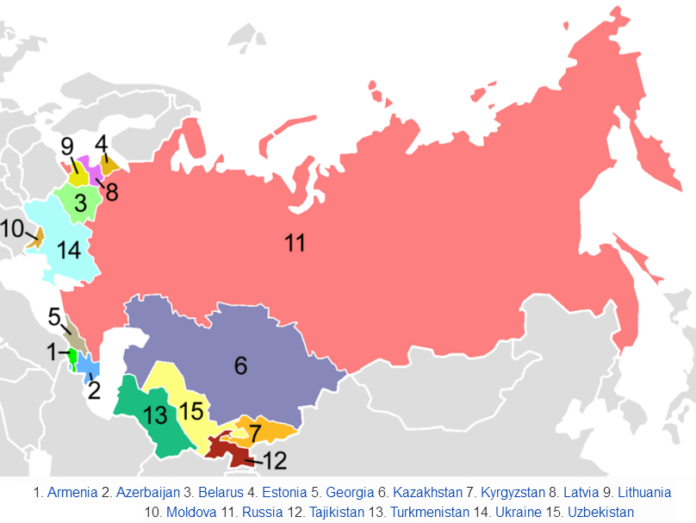Taliban freedom fighters watched the last US planes disappearing into the sky over Afghanistan on August 30, this year and then fired their guns into the air, celebrating victory after a 20-year war which drove the world’s most powerful military out of one of the weakest countries.
On the same day, Pentagon announced the complete withdrawal of the US troops.
Next day, Taliban spokesman Zabihullah Mujahid said: “American soldiers left the Kabul airport, and our nation got its full independence.”
After rapidly overrunning provincial hubs, Taliban militants on 15 August had entered the Afghan capital Kabul, while Afghan President Ashraf Ghani fled the country.
Ahmad Muwaffaq Zaidan, an expert on Afghan affairs, opined: “The Taliban’s three characteristics of patient, steadfast, and dangerous negotiator played a critical role in their victory, the end of the American era and the humiliation of the West.”
Prime Minister Imran Khan stated that Afghanistan has broken the “shackles of slavery,” as the Taliban returned to power.
Taking cognizance of the negative reaction of some US-led Western entities’ concerning the Taliban’s seizure of Afghanistan, Pakistan, Iran, Russia and China have urged the world to support the Afghans at this critical juncture for national reconciliation and to restore stability in Afghanistan as a first priority.
US President Joe Biden defended the chaotic military pullout from Afghanistan. He stated: “The decision to leave Afghanistan is the right one for America…I’ve argued for many years that our mission should be narrowly focused on counterterrorism, not counter-insurgency or nation building.”
Apart from facing severe criticism at home, Biden’s unilateral decision of exiting Afghanistan was also disapproved by America’s Western allies and other NATO countries who held him accountable for the Taliban’s takeover.
In fact, US President Biden announced on April 14 that he would begin withdrawing US troops from Afghanistan from May 1, setting a deadline for unconditional withdrawal of all 2,500 US troops in Afghanistan by September 11 to end America’s longest war by implementing the US-Taliban agreement signed in Doha on 29 February 2020. Setting aside the completion of various phases of the US-Taliban deal, the USA had started withdrawing its forces. Other NATO allies also began withdrawing their military from Afghanistan from May 1.
Indicating various dimensions of Biden’s hastily declaration, Western media had reported: “President Biden said that no amount of US forces can deter the Taliban or end the war…the Taliban is moving closer to a military victory…The war in Afghanistan shattered Biden’s faith in American military power.”
The Washington Post pointed out on 19 December 2019: “A confidential trove of government documents reveals that senior U.S. officials failed to tell the truth about the war in Afghanistan throughout the 18-year campaign, making rosy pronouncements they knew to be false and hiding unmistakable evidence the war had become unwinnable.”
However, the former USSRm which had subjugated ethnic and religious communities in various provinces and regions through its military, disintegrated in 1991. Even its nuclear weapons could not prevent its collapse. One of the major causes of the disintegration of the former Russian Empire was that its greater defence expenditures exceeded the maximum, resulting in economic crises inside the country. In this regard, about a prolonged war in Afghanistan, the former President Gorbachev had declared it a ‘bleeding wound’. While learning no lesson, the USA had been acting upon similar policies.
Besides affecting other NATO countries, the US cost of the GWoT, particularly in Afghanistan, had rapidly increased. It also includes other states like Somalia, Yemen, Libya, Syria, Nigeria, Philippines and elsewhere in the world where the US military and CIA are directly or indirectly involved.
The US-led troops, assisted by the CIA, carried out indiscriminate mass round-ups in catching up suspected Muslim men and women in Afghanistan and Iraq, including many other Islamic countries without evidence. Besides, CIA-FBI torture cells were present in several small countries and in ships. This setup further enhanced US costs for this different war.
Especially, after the victory of the Taliban, various foreign entities focused on the US/NATO cost of war in Afghanistan, including GWoT and other related expenditures. Forbes Com wrote: “In the 20 years since September 11, 2001, the United States has spent $300 million per day…Or $50,000 for each of Afghanistan’s 40 million people…$800 billion in direct war-fighting costs and $85 billion to train the vanquished Afghan army…U.S. taxpayers have been giving Afghan soldiers $750 million a year in payroll…Brown University’s Costs of War Project estimates the total spending at $2.26 trillion…The cost so far to care for 20,000 U.S. casualties has been $300 billion…The United States has financed the Afghan war with borrowed money…more than $500 billion in interest has already been paid.”
According to the BBC, “The UK and Germany-who had the largest numbers of troops in Afghanistan after the US-spent an estimated $30bn and $19bn respectively over the course of the war…Nato has sent $72m worth of supplies and equipment to Afghanistan. The bulk of the money spent in Afghanistan has been on counter-insurgency operations…Official data shows that since 2002, the US has also spent about $143.27bn on reconstruction activities in Afghanistan. More than half ($88.32bn) was spent on building up Afghan security forces… Nearly $36bn has been allocated for governance and development.”
Quoting a report of Washington think tank-the Center for Strategic and International Studies, CNBC and The New York Times revealed on 14 November 2018: “The U.S. wars in Afghanistan, Iraq, Syria…have cost American taxpayers $5.9 trillion…In addition to the money spent…to [domestic] terrorism by the Department of Homeland Security…Veterans benefits and disability payments…Indeed the West has largely failed to address the root causes of terrorism that perpetuate seemingly endless waves of fighters who foil the allies’ conventional military superiority.”
President Donald Trump had started the USA’s disengagement from GWoT. He had ordered a withdrawal of 2,000 American troops from Syria, as CIA-backed rebel groups and ISIS terrorists had been defeated and almost entire Syria had been liberated by the Russian-led coalition.
On 28 November 2018, the US Senate through a decisive majority, voted to end US military support for the Saudi-led war in Yemen.
Undoubtedly, the cost of these long-term military engagements purely in dollar terms have accelerated internal US problems, especially backfiring on the ordinary Americans, while the coronavirus pandemic has given a greater blow to the US economy.
The USA is the homeland of various communities, divided on ethnic, religious and linguistic lines, having affiliations with their own groups. In this connection, in his book Who Are We? The Challenges to America’s National Identity, Samuel Huntington opines, the USA was founded by British settlers who brought with them a distinct culture…the English language, Protestant values, individualism, religious commitment…the waves of immigrants later came to the United States gradually accepted these values and assimilated into America’s Anglo-Protestant culture. More recently, however, our national identity has been eroded by the problems of assimilating massive immigration from Latin America; especially Mexico might lead to the bifurcation of the United States.”
President Gorbachev had called Afghanistan a ‘bleeding wound’, which culminated into collapse of the former USSR. In the same sense, Afghanistan proved a ‘bleeding wound’ of the USA, which is moving it on the USSR’s path of disintegration.























